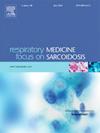β-受体阻滞剂与哮喘:来自 FAERS 数据库的惊人发现。
IF 3.5
3区 医学
Q2 CARDIAC & CARDIOVASCULAR SYSTEMS
引用次数: 0
摘要
导言:β-受体阻滞剂是治疗心血管疾病的重要药物,但可能会引发呼吸系统问题,尤其是非选择性β-受体阻滞剂。这些药物对哮喘患者的安全性还存在争议:本研究利用美国食品和药物管理局不良事件报告系统(FAERS)的数据,调查不同类别的β-受体阻滞剂与哮喘及类似哮喘不良事件(AEs)风险之间的联系:从 FAERS 数据库中分析了与β-受体阻滞剂有关的哮喘相关不良事件。通过使用报告几率比(ROR)进行比例失调分析,评估与不同β-受体阻滞剂类别相关的风险:结果:在报告的 251,145 例 β 受体阻滞剂 AE 中,4,104 例与哮喘有关。与非选择性β受体阻滞剂(ROR:0.90)相比,选择性β1受体阻滞剂的哮喘风险信号更高(ROR:1.15)。α和β双重受体阻滞剂的风险最低(ROR:0.51)。Vashistha 和 Kumar 分类法详细描述了各种 β 受体阻滞剂的风险特征,突出显示了即使在同一类别中也存在的差异。双重 α 和 β 受体阻滞剂、亲水性和亲油性 β 受体阻滞剂的哮喘风险较低,而选择性 β1 受体阻滞剂的风险较高,无论其内在拟交感活性如何:风险分层强调了在哮喘患者或易患哮喘的患者中谨慎选择 β 受体阻滞剂的必要性。该研究强调了不同类别的 β 受体阻滞剂在风险方面的显著差异,这对临床决策和患者预后至关重要。艾司洛尔、美托洛尔、奈比洛尔和纳多洛尔等药物对哮喘患者可能更安全,而倍他洛尔、比索洛尔、噻吗洛尔和普萘洛尔则应避免使用。对于使用β受体阻滞剂的哮喘患者来说,定期进行呼吸监测至关重要,应从小剂量开始治疗并进行调整,以尽量减少支气管收缩的风险。本文章由计算机程序翻译,如有差异,请以英文原文为准。
β-Blockers and Asthma: Surprising findings from the FAERS database
Introduction
β-Blockers are essential for cardiovascular disease management but can induce respiratory issues, particularly with non-selective β-blockers. Their safety in asthmatic patients is debated.
Objective
This study investigates the link between different classes of β-blockers and the risk of asthma and asthma-like adverse events (AEs) using data from the Food and Drug Administration's Adverse Event Reporting System (FAERS).
Methods
β-Blockers were first reviewed according to European Society of Cardiology classification and then using the Vashistha and Kumar classification. The risk associated with different β-blocker classes was evaluated through disproportionality analysis using the reporting odds ratio (ROR).
Results
Among 251,145 AEs reported for β-blockers, 4104 were asthma-related. Selective β1-blockers had a higher asthma risk signal (ROR: 1.15) compared to non-selective β-blockers (ROR: 0.90). α- and β-Blockers showed the lowest risk (ROR: 0.51). The Vashistha and Kumar classification detailed risk profiles for various β-blockers, highlighting differences even within the same class. Dual α- and β-blockers, hydrophilic, and lipophilic β-blockers posed lower asthma risks, while selective β1-blockers had higher risks regardless of intrinsic sympathomimetic activity.
Conclusion
Although the signals detected by disproportionality analysis are only candidate risks, the risk stratification resulting from our analysis highlights the need for cautious β-blocker selection in asthmatic patients or those predisposed to asthma. Furthermore, despite the limitations associated with the FAERS data, the study reveals significant variability in risk among different β-blocker classes, crucial for clinical decisions and patient management. Drugs like esmolol, metoprolol, nebivolol, and nadolol may be safer for asthmatic patients, whereas betaxolol, bisoprolol, timolol, and propranolol should be avoided.
求助全文
通过发布文献求助,成功后即可免费获取论文全文。
去求助
来源期刊

Respiratory medicine
医学-呼吸系统
CiteScore
7.50
自引率
0.00%
发文量
199
审稿时长
38 days
期刊介绍:
Respiratory Medicine is an internationally-renowned journal devoted to the rapid publication of clinically-relevant respiratory medicine research. It combines cutting-edge original research with state-of-the-art reviews dealing with all aspects of respiratory diseases and therapeutic interventions. Topics include adult and paediatric medicine, epidemiology, immunology and cell biology, physiology, occupational disorders, and the role of allergens and pollutants.
Respiratory Medicine is increasingly the journal of choice for publication of phased trial work, commenting on effectiveness, dosage and methods of action.
 求助内容:
求助内容: 应助结果提醒方式:
应助结果提醒方式:


